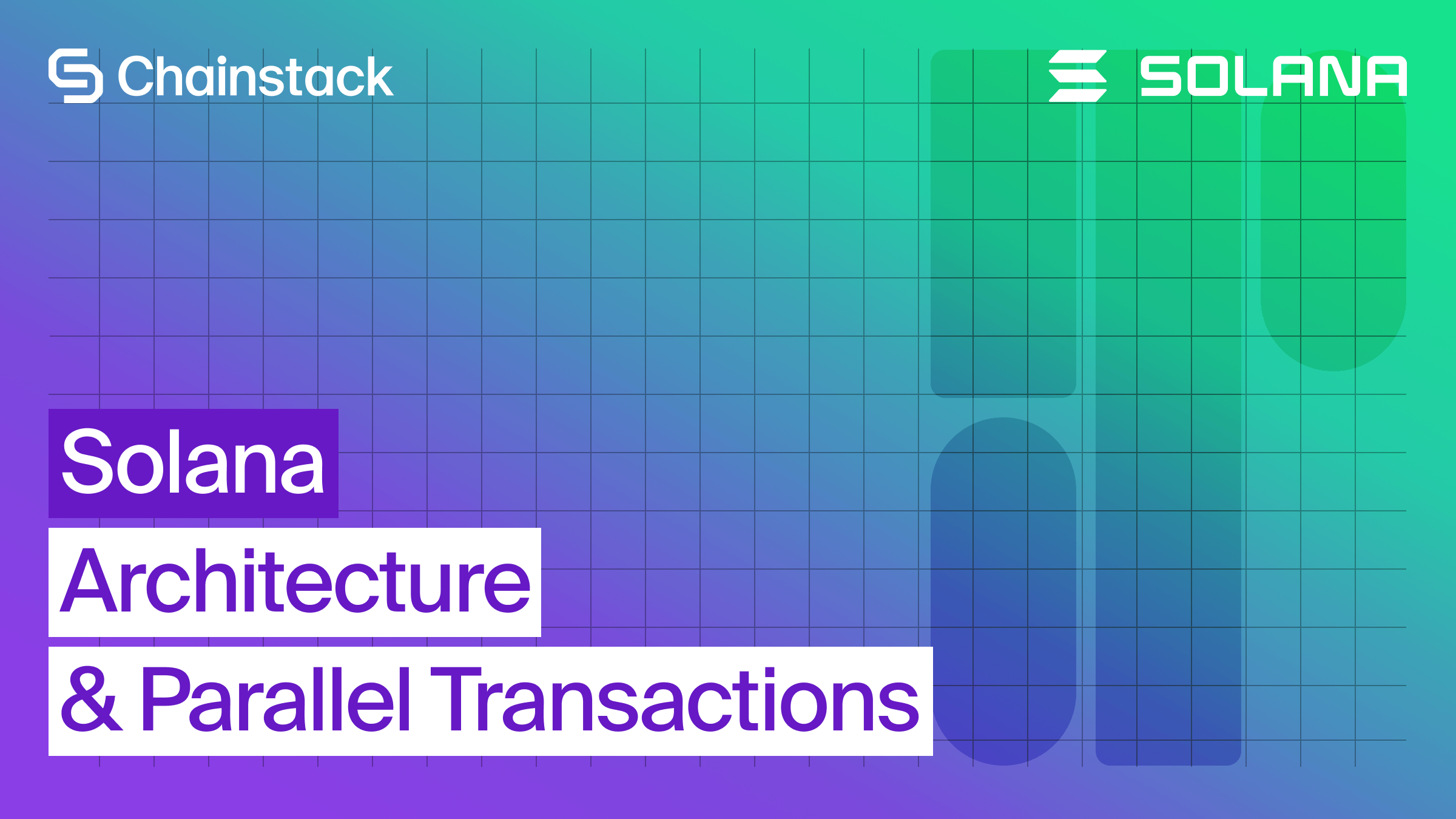We’re starting a new series of articles by Andrey Obruchkov, an experienced blockchain engineer who has spent years exploring how high-performance blockchains like Solana work under the hood.
In this series, he explains Solana’s technical foundations in simple, practical terms — from its core architecture and account model to how transactions are processed at scale.
TL;DR: The Solana blockchain achieves high throughput and low latency via three key innovations: a cryptographic timestamping mechanism (Proof of History) that records the order of events without relying on external clocks, a consensus layer (Tower BFT) built on that timestamping to finalize blocks quickly, and a parallel runtime (Sealevel) that allows many transactions to execute concurrently if they don’t touch the same accounts. These architectural layers enable Solana to scale far more than traditional blockchains.
The Solana blockchain is built for high performance, emphasizing speed, scalability, and low latency. To achieve this, it introduces several architectural innovations that set it apart from traditional blockchains like Ethereum. In this first part, we’ll focus on Solana’s core architecture — namely, its use of Proof of History (PoH), Tower BFT, and parallel transaction processing.
Core Architecture
One of Solana’s foundational pieces is Proof of History (PoH). This concept was introduced by Solana’s founder, Anatoly Yakovenko, and is centered on the idea that in a distributed system, it’s not just the events that matter, but their precise order in time.
Proof of History (PoH) uses a special cryptographic function called a Verifiable Delay Function (VDF). It takes a certain amount of time to calculate, but once it’s done, anyone can easily check that the result is correct. Validators keep hashing the previous result together with new data, creating a continuous chain of hashes that works as a built-in timestamp for all network events.
Because this chain already includes the order of events, Solana doesn’t need external clocks or fixed block times like Bitcoin or Ethereum. Each transaction points to a specific place in the PoH sequence, which lets validators quickly see when it happened compared to others. This makes transaction confirmation much faster.
On top of PoH, Solana runs a consensus system called Tower BFT, based on an older model known as PBFT (Practical Byzantine Fault Tolerance) but adapted for PoH’s internal clock. In normal PBFT, validators must send many messages to agree on transaction order, which slows things down as the network grows.
Solana improves this by allowing each validator to verify the timestamped sequence independently, reducing the communication required. Validators also stake SOL tokens and vote on which version of the ledger they support. The longer their vote remains on a block, the more difficult it becomes to change it later. This system allows Solana to reach final, unchangeable confirmations quickly and efficiently.
Putting it together:
- A cryptographic timestamp (PoH) gives a reliable order of events.
- A consensus layer (Tower BFT) uses that order to finalize blocks.
This enables Solana to process thousands of transactions per second while maintaining security and decentralization.
Parallel Transaction Processing
A major hurdle for many blockchains is that transactions are processed sequentially: one after another. This is because many transactions touch shared state (for example, accounts or contract storage), so to avoid conflicts, you must serialize them. That severely limits throughput.
Solana addresses this via its runtime named Sealevel. Before executing, each transaction declares two sets of accounts: which it will read, and which it will write to. If two transactions do not overlap on writable accounts (i.e., they touch different state), they can execute in parallel across multiple cores or even GPUs.
For example:
- Transaction A writes to Account X;
- Transaction B reads from Account Y;
- Since X and Y are disjoint, both can proceed at once.
This transforms block validation from a single-threaded bottleneck into a highly parallel task, massively boosting throughput. When combined with PoH (for ordering) and Tower BFT (for consensus), parallel execution allows Solana to scale transaction processing without compromising determinism or consistency.
Why these innovations matter
- PoH’s VDF embeds a cryptographic sense of time, so the network doesn’t have to coordinate timestamps externally. This enhances efficiency and scalability.
- Tower BFT leverages the timestamping to make consensus faster and leaner, because validators need less communication.
- Sealevel’s parallel processing enables the network to execute many transactions concurrently, making high throughput feasible, not just theoretical.
Together, these architectural choices explain how Solana aims to achieve sub-second finality, tens of thousands of transactions per second, and the ability to scale to large numbers of active users and applications.
Read the full article on Medium
What’s next
In the next part of the series, the article will shift focus to Solana’s account model — how programs, state, and data are organized in accounts, how it differs from the contract-centric model in Ethereum, and what implications that has for developers.
Reliable Solana RPC infrastructure
Getting started with Solana on Chainstack is fast and straightforward. Developers can deploy a reliable Solana node within seconds through an intuitive Console — no complex setup or hardware management required.
Chainstack provides low-latency Solana RPC access and real-time gRPC data streaming via Yellowstone Geyser Plugin, ensuring seamless connectivity for building, testing, and scaling DeFi, analytics, and trading applications. With Solana low-latency endpoints powered by global infrastructure, you can achieve lightning-fast response times and consistent performance across regions.
Start for free, connect your app to a reliable Solana RPC endpoint, and experience how easy it is to build and scale on Solana with Chainstack – one of the best RPC providers.

